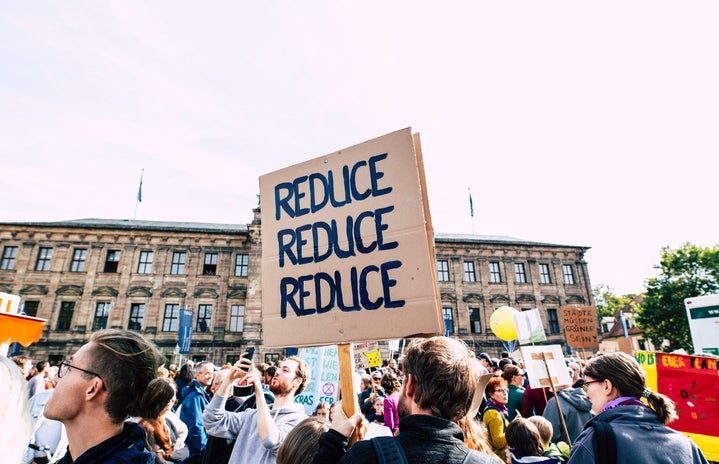Move-in season is stressful enough without worrying about the impact your move-in has on the environment. Throughout my time at Pace, I have been reflective on what sustainability can realistically look like for college students, especially those living in metropolitan areas. This year, I collaborated with Pace Sustainability Initiative’s (PSI) committee coordinator, Abigail Cardenas, to map out a greener transition back to campus life.
I am sure everyone remembers learning the three R’s (reduce, reuse, recycle) of sustainability in elementary school, but we often fail to recognize their steadfast importance in our adult lives. Arguably the most cost-effective way to reduce your carbon footprint is by reusing old items in your dorm. While it may be tempting to revamp your wardrobe or decorations each year, overconsumption is a large contributor to the climate crisis. Initially investing in quality items such as bedding and storage will not only save you money in the long run but also minimize unnecessary waste year to year. Likewise, taking extra precautions — such as vacuum packing belongings between move-ins — extends their life.
Reusing doesn’t stop at merely clothing and furniture. I know I, personally, have fallen victim to the pressure to immediately swap to more sustainable options. While this effort is commendable, it may not have the effect you are anticipating. For instance, using glass containers may be considered the most environmentally friendly way to store leftovers, but disposing of all of the plastic tupperware in your cabinets is ultimately still causing waste. Instead, it is most productive to use these less desirable products until the end of their lifetimes and save them from preemptively heading to the landfill.
This isn’t to say that we should never spice up our dorm decor, because what’s the fun in that? Shopping small and second-hand are generally both conscious ways to consume. Being that Pace is in the city, there are plenty of places to engage with small businesses. Whether it be the vintage fleas at Seaport, the art vendors in the Chelsea Market, or the thrift stores in Brooklyn, the opportunities are endless, and similar businesses likely exist in other cities. On a college student’s budget, however, these options may not be totally realistic. Talking to friends and swapping old or unused decorations is both an affordable and ethical way to liven up your space.
In addition to decoration swaps, coordinating with friends and your campus community in other ways can also help facilitate a greener transition to dorm life. Finding peers in your local area to carpool with during annual move-ins helps to reduce your carbon footprint. On a smaller scale, working with your roommates can also be extremely productive. In my own room, we have recycling and composting systems to prevent unnecessary waste in daily life. Likewise, planning who brings what can minimize excessive consumption. There are only so many Keurigs needed in one room.
Arguably the most accessible resource for sustainable campus living is your university’s environmental department and organizations. PSI specifically hosts garden volunteering sessions and hands out sustainable alternatives to students. If, however, a campus does not have any similar student organizations, many metropolitan areas have open-access community gardens. Within New York, GrowNYC is one of the several non-profits that facilitates these greenspace developments. Needless to say, these programs act as an open forum for climate change education and as an opportunity for college students to give back. In our own sustainability efforts,we must remember that the climate crisis is not the fault of the consumer. Although we as individuals are often made to feel responsible for climate change, the majority of carbon emissions can be traced back to large corporations. The guilt we often carry in regard to our consumption is unwarranted, but this doesn’t excuse inaction. Ms. Cardenas says it best in her explanation that, “It is always better to contribute positively than negatively.” While these pieces of advice may seem trivial and somewhat common sense, sometimes we just need a reminder that small changes can make the biggest difference.


